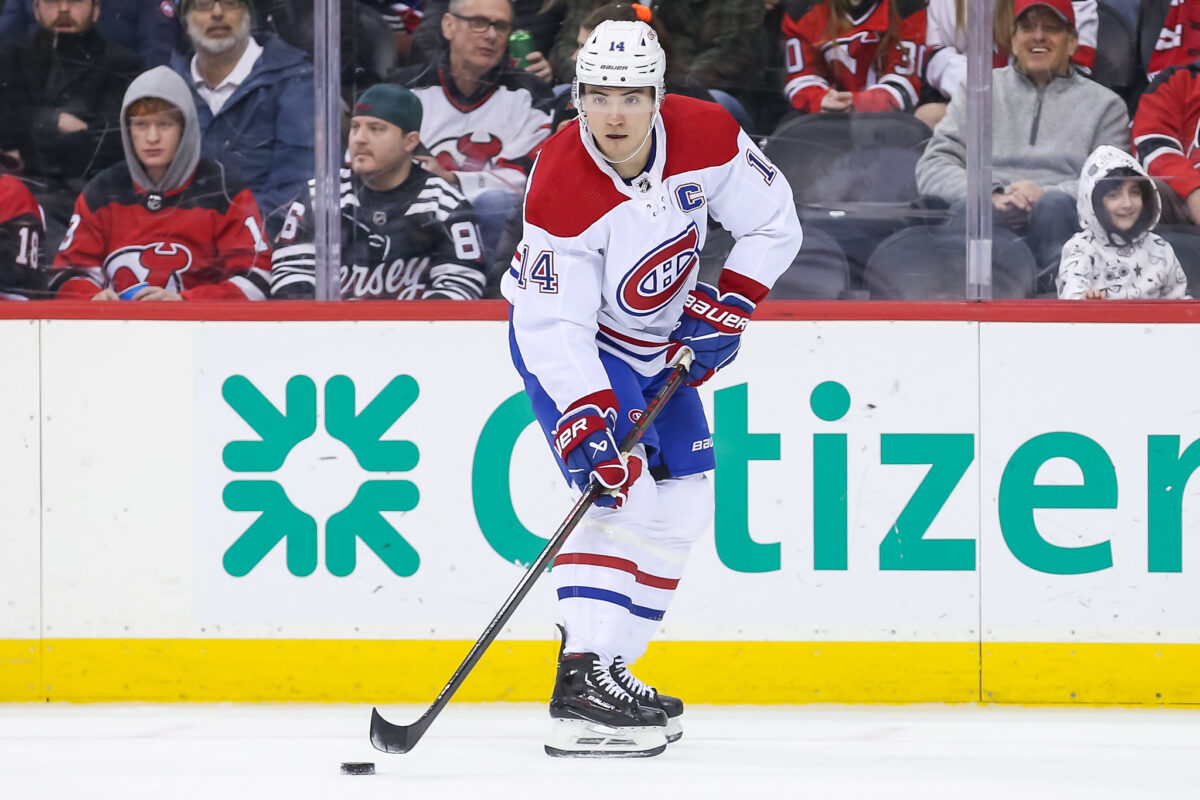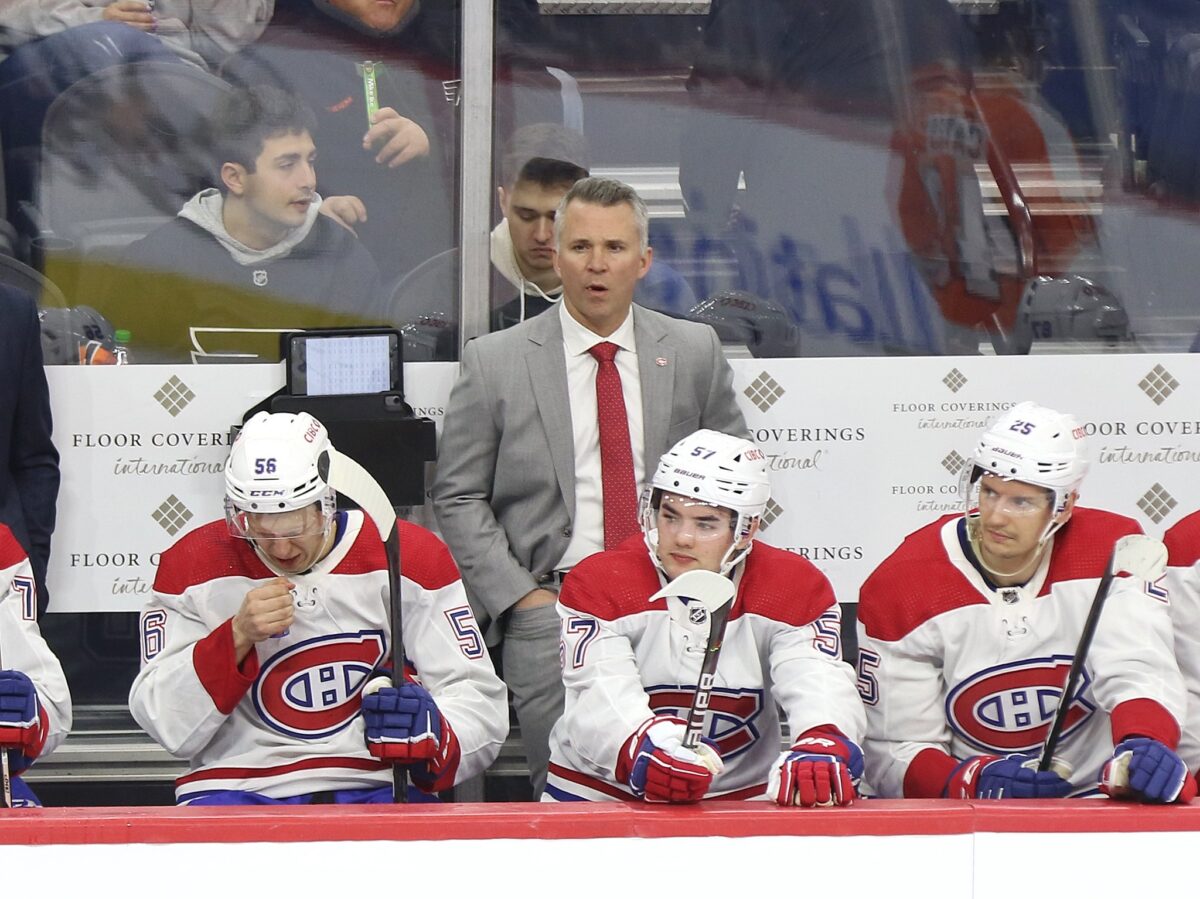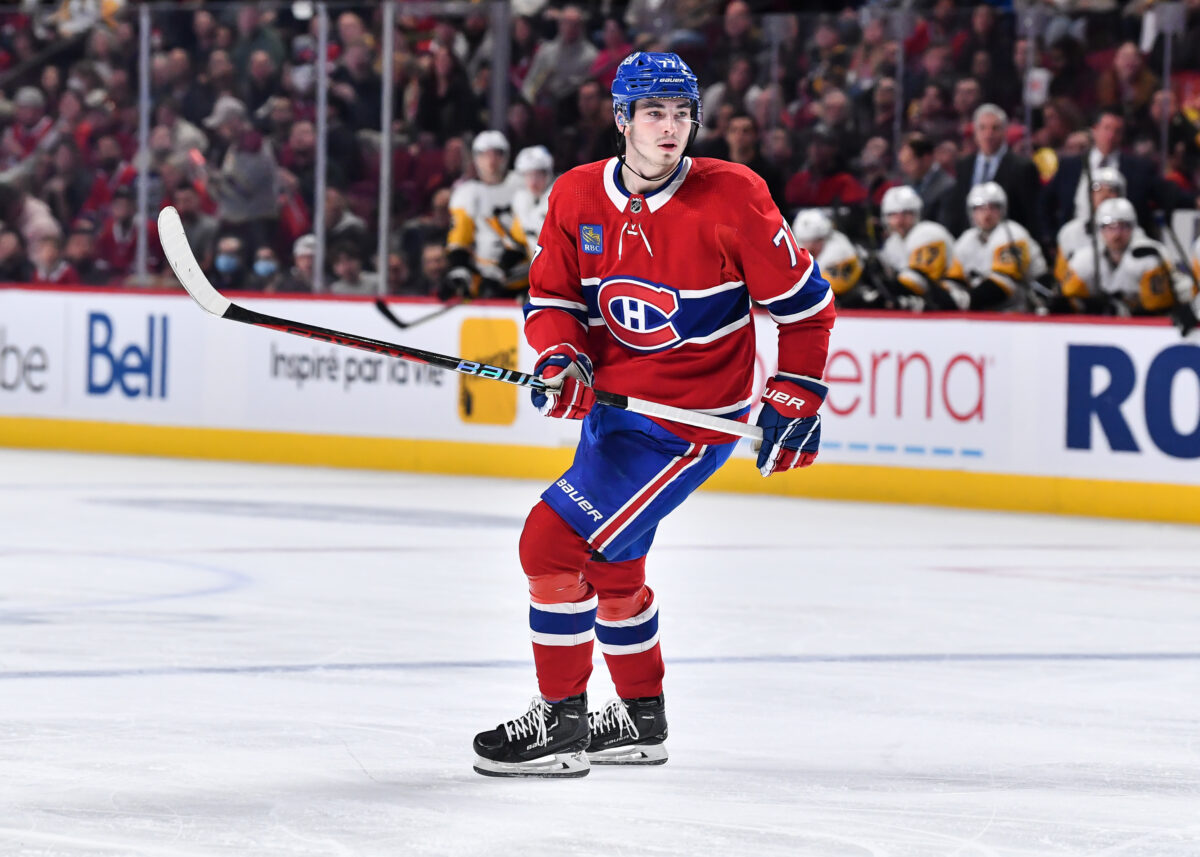Succeeding, so far. The Montreal Canadiens just completed the second season of a rebuild under general manager (GM) Kent Hughes. Due to the plan in place, the team loses far more games than it wins. This was something Canadiens fans were never expected to accept, yet they have accepted it with open arms. This may have to do with there being visible improvements in some areas that provide hope for the future.
Related: Canadiens Prospect Report: Juraj Slafkovsky
Despite the losing season, some positives can be found among the losses. There are even silver linings to be found in the negative events. This is a list of a few positives that could provide a basis for a contending team in a few years.
4. Canadiens Set Man Games Lost Record (Again)
For a second consecutive season, the Canadiens led the NHL in total games lost to injuries with 751 man-games lost. Only one player has dressed for every game in the past two seasons, and that’s captain Nick Suzuki who played in all 82 in both the 2021-22 and 2022-23 seasons. Every other player with an NHL contract had to deal with an injury of some sort during the past season.

In the 2021-22 season, the Canadiens broke the single-season total man-games lost record, hitting the 700-plateau. This crushed the previous record, held by the Los Angeles Kings that was set in 2003-04. The injury bug that bit the Canadiens did not slow down as the season wore on as the Habs finished with 14 regular players on the injured list. In total, 39 players dressed for at least one game on the NHL roster, and of those, 26 missed significant time forcing the team to rely on player call-ups from the Laval Rocket.
The positive aspect is two-fold. First, it provided Canadiens management a direct view of the progression made by their prospects and to gauge if they are NHL-ready and if not, how far off they are from that possibility. Also, player development will have more information that can be used to build off-season training plans that can help these players take the step forward they need to compete for an NHL job.
Secondly, there’s no way they can set the record for a third season in a row, right? Fans will cross their fingers. In the meantime, the GM will use this to launch a review of their medical approach and provide some upgrades to a long-overlooked department that plays a direct role in performance.
3. Core Pieces
Another positive is that the Canadiens have identified two core pieces that have already reached All-Star levels of performance at a young age. These two young players are Nick Suzuki (23) and Cole Caufield (22 years old). They are the future of the organization, one as a top-line center, the other as a 50-goal scoring threat.
Suzuki’s back-to-back All-Star appearances and consistent growth offensively to match improvements defensively point to a sustainable level of performance. Caufield did have a poor performance in 37 games played under Dominique Ducharme in 2021-22 where he scored only one goal. Since the arrival of head coach Martin St. Louis however, he has exploded for 48 goals and 71 points in 83 games played (he had 100 pts in 119 games played in that time). In an injury-shortened 2022-23 season, he finished tied for the team lead in goals with 26, despite playing only 46 games.
Two-thirds of a number one line is a great consolation prize after a difficult season, but other core pieces have been found too. Mike Matheson’s arrival in the Jeff Petry trade was seen as a good compromise, but his play this past season proved that, when healthy, he can assume that top pairing role. Additionally, the Canadiens have found a 21-year-old, highly mobile, minute-eating, physical shutdown defender in Kaiden Guhle. Finally, there is Arber Xhekaj. Before his injury, he led all rookie defensemen in goals, which is a bonus offensive side that matches his solid defensive play. He also brings an intimidation factor that the Habs have been missing since the loss of Shea Weber. This provides Hughes with a foundation for his core that has fewer holes to fill going into this offseason than he had at the end of last season.
2. Full Season of St. Louis Behind the Bench
The first full season of St. Louis behind the Habs’ bench provided many highs and lows, ending the season in a position everyone expected, bottom five in the NHL standings. While there is clearly work to be done to adjust the special teams, especially on the penalty kill, there were significant improvements in several areas. Player effort and involvement to start with. No matter who was in the lineup, the entire team provided their best efforts nearly every night. The team may have been out-skilled a lot of the time, but they were rarely outworked no matter the outcome of the game.
More important was the players’ personal growth that St. Louis nurtured. This in turn gave the players a sense of personal accomplishment that allows them to walk away from this season with a positive outlook as opposed to the sense of failure that finishing 28th in the NHL should provide.

“Le mieux est l’ennemi du bien (The perfect is the enemy of the good)”. It is better to make a little progress than to strive for perfection and fail to have any progress. Having an understanding of the process involved in a rebuild, St. Louis guided the players to focus on one area that is under their control, their work ethic, and a focus on accountability.
I think they’re having a lot of fun; you guys walk in the halls, you can feel it. You hear the music playing and stuff, and I don’t know if, from the stands, you’re able to catch some glimpses of the bench, (but) guys are having fun on the bench. They’re engaged, they’re playing hard for one another, and by no means are we perfect out there. We make mistakes, guys are tapping each other on the pads and next line up is trying to pick the team up or keep doing what we’re doing. It’s a really good vibe, and that’s what you want and that’s what we’re trying to build.
– Martin St. Louis
St. Louis has a history of rising to the challenge, and as a rookie NHL coach, he faces many. What made him such an effective player was his willingness to outwork his opponent in all aspects of the game, both on and off the ice, so it should come as no surprise that he is still bringing that mindset with him to his new role.
1. Kirby Dach
The addition of Kirby Dach in a blockbuster trade on the draft floor in the summer of 2022 was a gamble, but a calculated one. He had just finished a disappointing 26-point season with the Chicago Blackhawks. Despite being a former third-overall pick in 2019 and only 21 years of age, Chicago decided to move on from him for a draft pick. It was a move that provided Dach with what he needed most, a fresh start in a new city to play exclusively in a top-six role.

Dach is a rare type of player, a 6-foot-3 202-pound center whose best skill is controlling the play. He does so either at center or on the wing, all while using his size and reach to protect or strip pucks and drive the play in transition with controlled zone exits and entries. This aspect of the game is overshadowed by points, but what he provides makes those around him better. Any team is improved when they play with control of the puck versus chasing it. It takes the pressure off of the defence and goaltenders as the puck is taken 200 feet away from their net.
Hughes and St. Louis have mentioned on a few occasions that they see Dach as a center, which would provide Montreal with two talented and young pivots in the top six. There is value in reinforcing center depth. Yet, his impact on the top line with Suzuki and Caufield led the team in production with 2.68 expected goals for per 60 minutes, and in possession (53.1% Corsi for), making it one of the most dangerous lines in a Canadiens uniform in several years.
Dach and Suzuki provide hope for the fans. As the Canadiens have been in search of a legitimate one-two punch at center to lead the team to contender status, this is the closest they’ve come in the 21st century. The disappointment many fans feel in seeing the team lose so often is being mitigated by the fact that there are positives to be found that all point to the team following the blueprint to contention other teams have used during the salary cap era. While hope and positivity are still plentiful in Montreal, there will be changing expectations that Hughes and the roster will need to step up and meet to keep that level of hope alive and well.